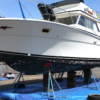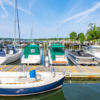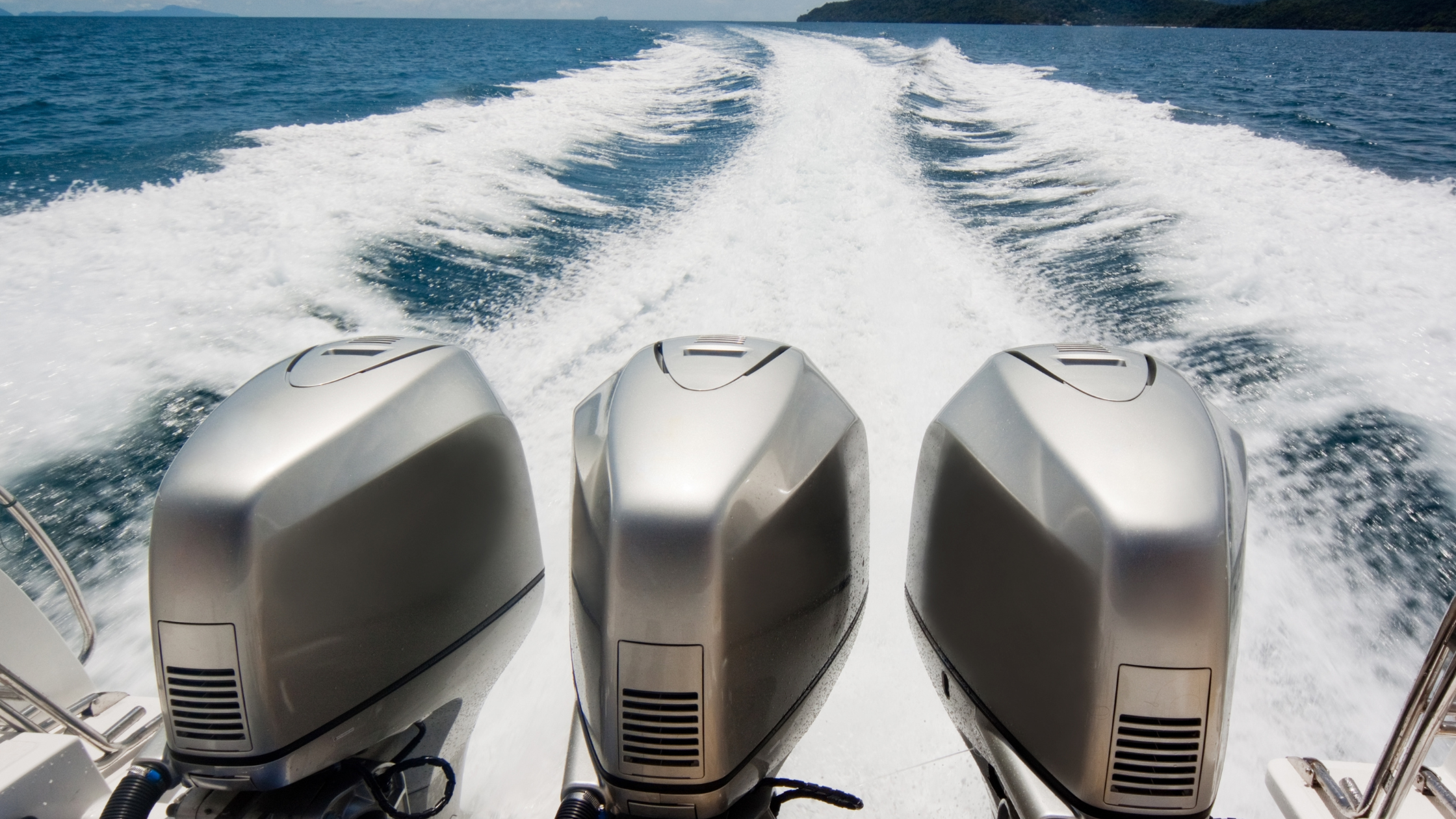
There are many marine engines available in the market but they mostly fall into three categories: inboard, outboard and sterndrive or inboard/outboard. Inboard engines are inside the boat while outboards are external and visible. I/Os are a combination. Each type has advantages and disadvantages and specific applications to which they’re best suited.
Inboard engines and sterndrives
Inboard engines are motors that are mounted low in the hull of a vessel and may be coupled to a driveshaft or pod drive system that attaches to the propeller under the boat. Typically, the propeller provides the power but steering is done via a separate rudder. A sterndrive uses an inboard motor coupled to an external drive system which is mounted low on the transom of a boat. The entire sterndrive unit pivots to provide direction thrust so no separate rudder is needed.
Pros
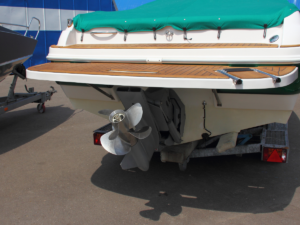 Inboard engines usually have more torque so they are used on large motor yachts and sailboats with a heavier displacement.
Inboard engines usually have more torque so they are used on large motor yachts and sailboats with a heavier displacement. - Due to their power, inboards are also popular with tow boats for waterskiing, wakeboarding and wake surfing. They provide smooth control and a clear transom to keep tow ropes from fouling (as they would on a protruding outboard engine). Sterndrives are much the same with the added advantage that you can lift the propeller partially out of the water which cannot be done on true inboard installations.
- Inboards are available as gas or diesel engines.
- All inboards and sterndrives offer less cluttered transoms with plenty of room for stern platforms and swim steps.
- Inboards usually last hundreds (if not thousands) of hours, especially if they operate as diesels rather than gas engines.
- Inboards can be used with a joystick drive system that makes docking easier.
- Most diesel inboard engines offer superior fuel efficiency.
Cons
- Inboards have lots of torque, but they generally reach lower top speeds than outboards.
- Inboards take up room inside a boat.
- Working on inboard engines can be difficult due to limited access inside the boat.
- Underwater appendages (mostly) can be serviced only when the boat is hauled out of the water and they can be damaged by submerged obstacles.
- Repowering an inboard engine is difficult and expensive and may require cutting the engine out of the boat.
Outboard engines
An outboard is a comprehensive engine that packages the motor and the drive system/prop in one unit which is added to the transom of a boat and is completely external to the vessel. Small outboard motors have tillers and can be operated by hand while larger ones have remote steering capability.
Pros
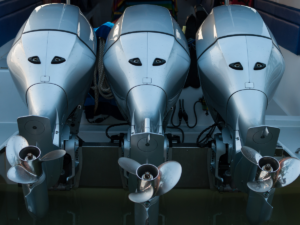 Because outboards are fully encapsulated engines outside the boat, they’re easier to service, repair, winterize and replace.
Because outboards are fully encapsulated engines outside the boat, they’re easier to service, repair, winterize and replace. - In all but one case, outboards turn as a unit providing directional thrust. The one exception is the newly introduced Mercury 600-hp engine that has an independently turning lower unit.
- Outboards may be lifted (trimmed) clear of the water so there are no underwater appendages to corrode or gather marine growth.
- Because they can be (partially) trimmed while running, outboards are great in shallow waters.
- With the propulsion system on the transom, there’s more room inside the boat for extra seating, accommodations, or storage.
- Outboards generate higher top speeds.
- Depending on the design of the boat, multiple outboards can be mounted for more torque and even higher top speeds.
- Joystick docking systems have now been developed for outboards.
- Outboard popularity is growing and therefore outboard offer wide dealer and service networks.
- New outboard models are quieter, more powerful and run cleaner than outboards of just a few years ago.
Cons
- In many cases, outboards are louder than inboards.
- Outboards tend to create larger wakes than inboards which can be a problem for waterskiers and shoreline erosion.
- Outboards can foul fishing lines when casting or tow lines in watersports.
What to choose
The type of propulsion depends heavily on the type of boat and its intended purpose and in most cases, buyers have limited choice of motors. Outboards are gaining in popularity while sterndrives in the US are losing market share. Inboards, that have specific applications, are mostly holding their own although outboards are making inroads those segments too. Determine the kind of boat you’re looking for and then check with the manufacturer about available propulsion systems.




